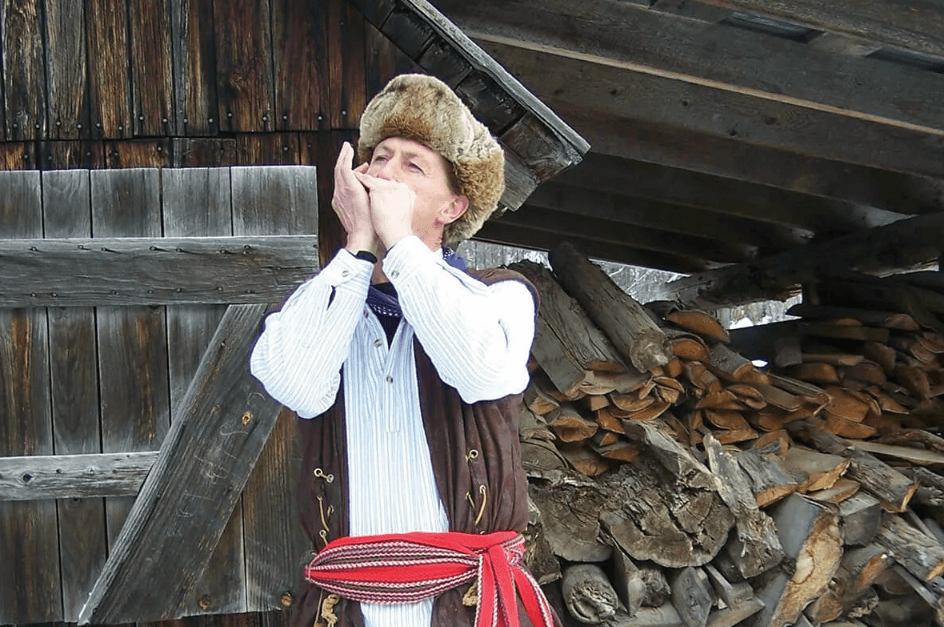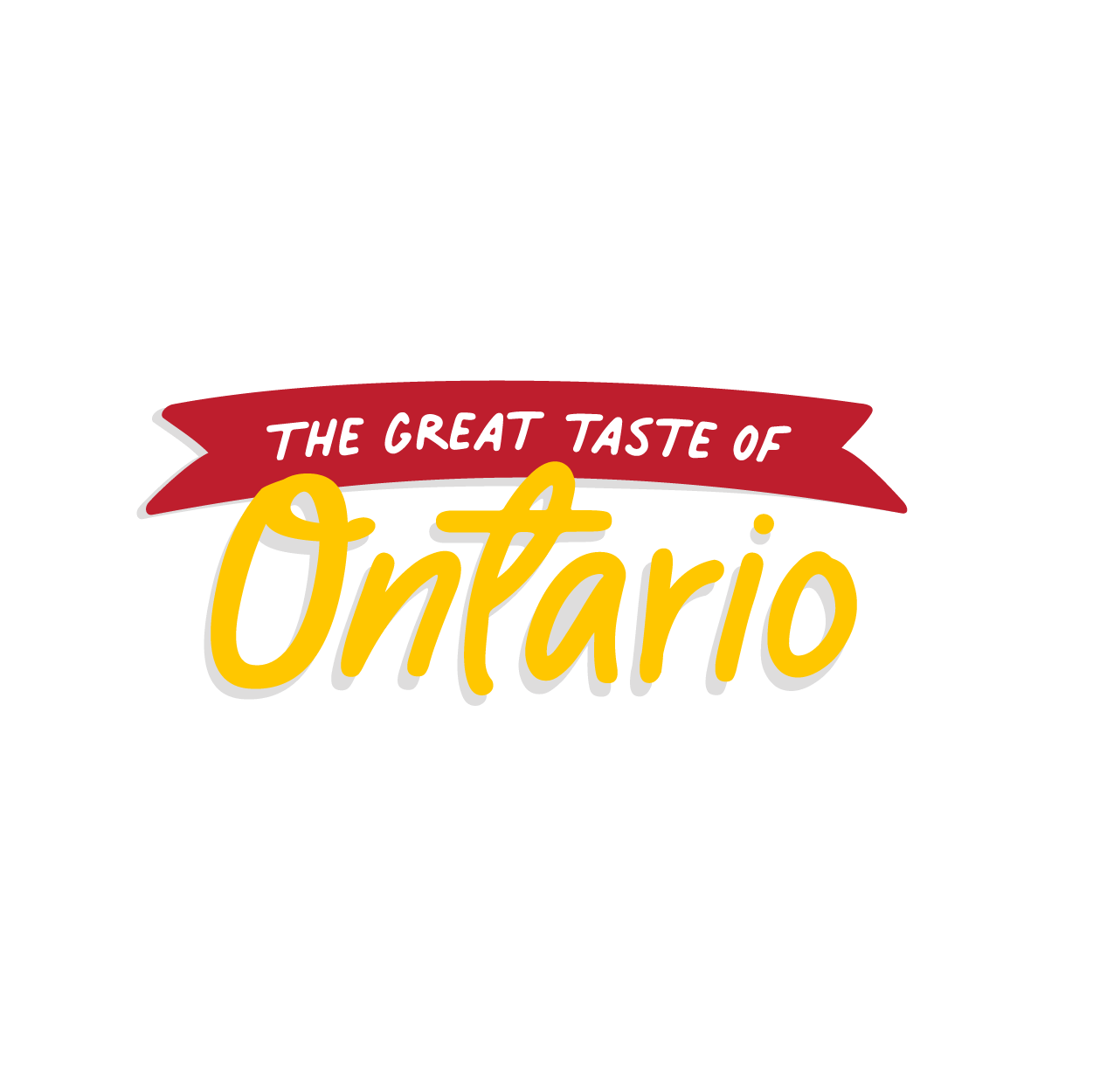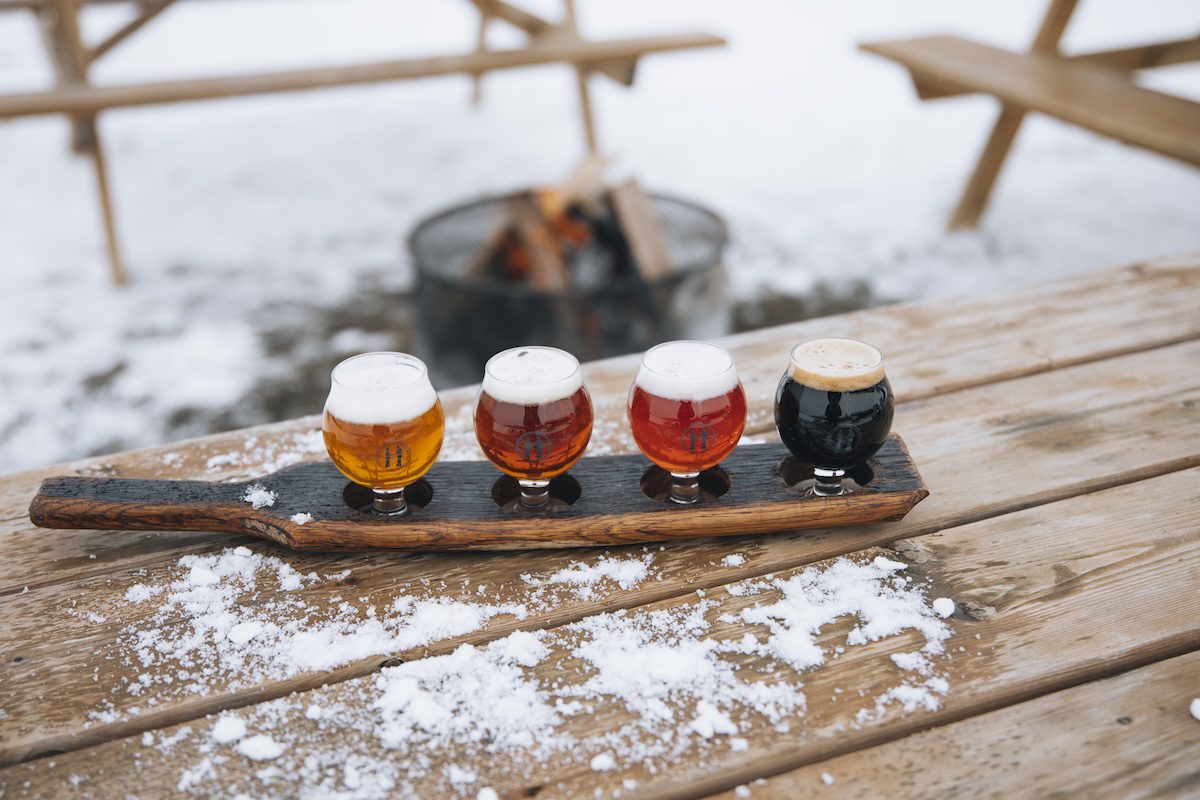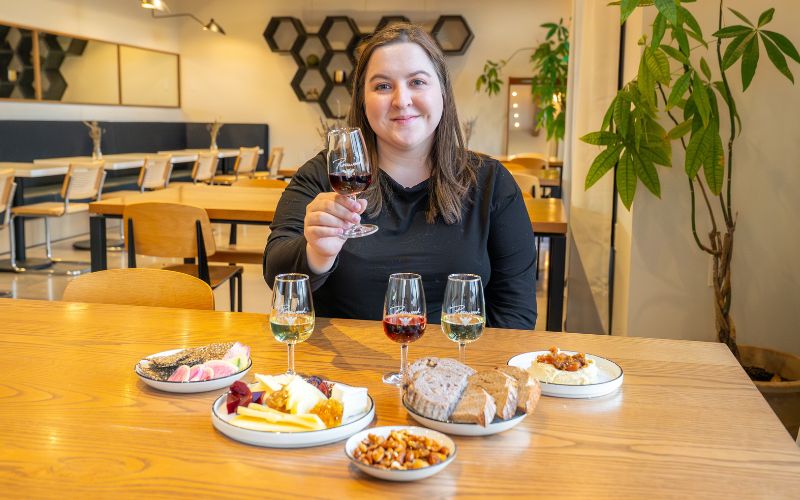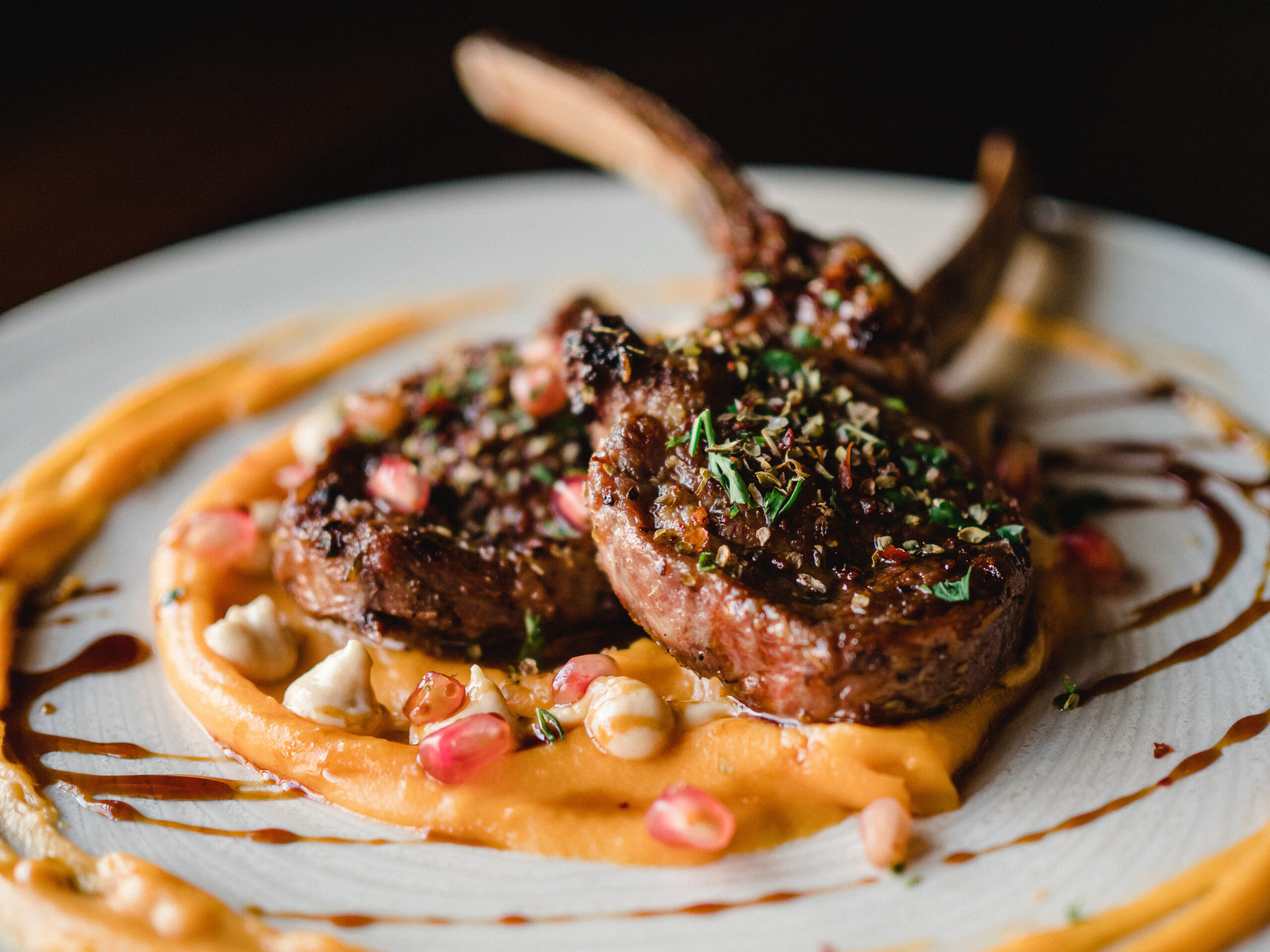CONTENT FROM: GREAT TASTE OF ONTARIO REPORT
PUBLISHED DECEMBER 9, 2022

At sugar camp and pancake house Wheelers, visitors can get a glimpse of history thanks to Tim the Voyageur.
In 1615, legendary French explorer Samuel de Champlain set out to forge a trail through what would, in 175 years, become part of Upper Canada. Today, four centuries later, the mark made by Champlain during his travels throughout the territory we now call Ontario remains in the form of a rich Francophone culture that flourished along the route of his 1,500-kilometre journey.
“He kept meticulous journals and he was a meticulous cartographer,” says Anne-Marie Forcier of the Société Économique de L’Ontario (SEO), before going on to explain how his original journey has become a path that contemporary travellers can follow themselves.
Created by SÉO and its tourism partner Salut Canada in an effort to highlight Francophone history and culture in Ontario, the scenic Route Champlain skirts the historical path taken by the French explorer, following the waterways Champlain traversed by canoe. Along the way, travellers will pass through provincial parks, visit historical sites that document Champlain’s relationships with his Huron-Wendat guides and his visits to Indigenous communities (the Route was created in consultation with Indigenous Tourism Ontario), and take in the same views of the province’s magnificent wilderness that Champlain himself saw so long ago.
“His voyages and exploits had an enormous impact on the formation of Ontario’s geographical boundaries, trade, and culture in the 1600s – outcomes that still have relevance today,” says Louisa Mursell, executive director at Transportation Options, the group responsible for creating the cycling itineraries for each of the Route’s regions.
The Route Champlain covers seven regions in Ontario and can be travelled as a whole, or visitors can limit their explorations to one or two destinations. Beginning east of Ottawa in Chute-à-Blondeau, they will pass through the capital onto Renfrew, then head to North Bay and Lake Nipissing before turning south to visit places like Algonquin Park, the Bruce Peninsula, and Prince Edward County, then coming to the Route’s end in Kingston.
In addition to an immersion in history and nature, the stops mapped out along the Route include places where travellers will taste Franco-Ontarian and Indigenous foods, from traditional dishes to modern ones crafted by local producers, growers, and chefs. This is very deliberate – food occupied a significant place in Champlain’s journals. He wrote at length about the diets of the Indigenous peoples he met, including the types of berries they foraged for. Blueberries were a personal favourite of the legendary explorer’s, which is how Hugli’s Blueberry Ranch in Pembroke, where visitors can pick berries in summer or pick up preserves in winter, became a stop on the Route.
Mountain Ash Farm and Country Inn is another destination that showcases both French Canadian and Indigenous cuisine. After a guided Champlain-themed tour of the town of Creemore created by owner Patricia Cleary-Clark, visitors are invited to sit down to dine at an off-grid sugar shack to taste local maple syrup, an Indigenous invention enthusiastically adopted by French Canadians. You’d be advised, however, to save room for dinner. In the village’s downtown, locally sourced ingredients go into making the dishes at Chez Michel. Offering hearty bowls of bouillabaisse and plates of canard confit, the menu is designed to celebrate the essentials of French cuisine.
In the Lanark Highlands north of Kingston sits another culinary gem that offers hearty and traditional breakfasts with a side of maple syrup history. Wheelers, an unofficial but recommended stop on the Route, was started by Vernon Wheeler and his wife Judy, who began tapping the trees on their farm back in 1978, before opening a pancake house 18 years later. The project has grown to include a Maple Museum and a Logging and Chainsaw Museum; Vernon is the Guinness World Record holder for ‘Largest Collection of Maple Syrup Artifacts.’ In peak season, the family serves pancakes slathered in their house maple syrup to hundreds of visitors a day, says Forcier, who adds that the business is a family project that employs multiple generations of Wheelers.
Ottawa, too, offers a not-to-be-missed food themed destination: “Near Dow’s Lake,” suggests Mursell, “stop at the Canada Agriculture and Food Museum, located in the world’s only working farm in the heart of a capital city. Visitors can learn all about the food they eat, where it comes from, how it’s grown, and interact with a variety of breeds of farm animals.”
Mursell has a few final pieces of advice for Route Champlain travellers: “Stop at Grounded Coffee in Midland, a hip little cafe with a passionate coffee roaster, artisan bakers, and real baristas,” she says. “And sample local treats at Dooher’s, a long established and well-loved bakery in Campbellford. In picturesque Warkworth, Our Lucky Stars Café and Coffee Roastery is an award-winning, bicycle-friendly location with a delicious menu that also has vegan, vegetarian, and gluten-free menu options made with local ingredients.”
In his journals, Champlain wrote, “Let us prepare the road for those who will follow.” The Route Champlain has prepared the road for visitors looking to uncover the Francophone history of Ontario on multiple levels. “It’s all the senses,” says Forcier. “You’re hearing French, you’re seeing French menus, you’re really immersed in the experience.”
Fall in love with the Great Taste of Ontario again and again.
Visit ontarioculinary.com/great-taste to download curated passports to our province’s most delicious destinations.
